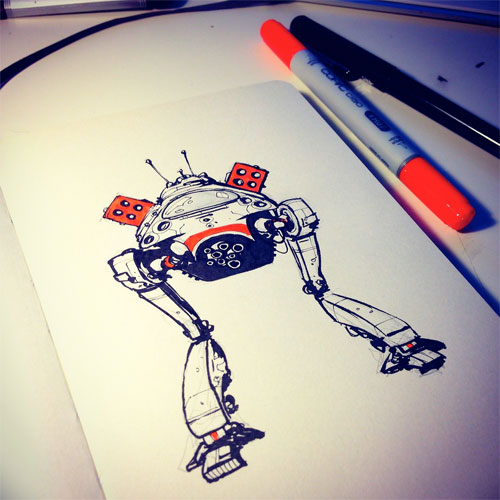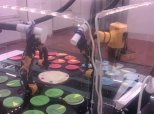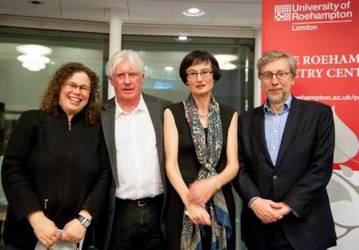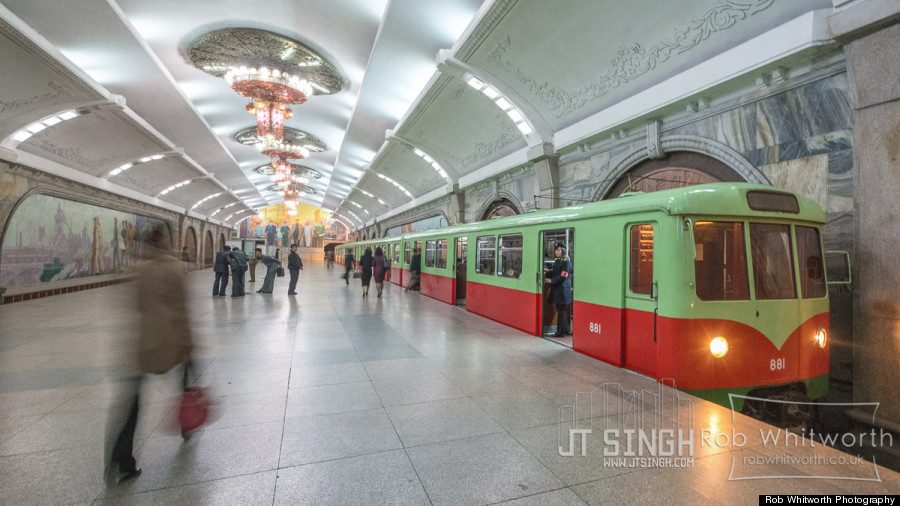Have you ever paid attention to how body language expresses an unspoken language? It’s fascinating how even minor movements can send a message of tension, flirtation, or annoyance. While some of this comes from subtle hand gestures or posture, much of it comes from the “windows to the soul”–the eyes. My sons learned this early on. As toddlers, they would make eye contact with me, testing the waters on occasion when they’d start getting rowdy in public. A simple raise of my brow reminded them that there was always a time-out corner nearby.
Portrait artist Luana Luconi Winner, featured in three new painting DVDs, knows the importance of capturing the uniqueness of one’s eyes, and how to do so with realism. “If all painters took a sculpting class, their progress in acquiring the three-dimensional knowledge of the head would be hastened,” she says. “When you divide the face into simple geometric forms, the many undulating surfaces and total topography become easier to handle, to recognize, to paint.” Learn more in this excerpt from Painting Classic Portraits: Great Faces Step by Step, and click here to post this how-to on Pinterest.
Happy painting,
Cherie

“The eyes are the single most important feature in a portrait,” says Winner. “Take time to resolve the eyes’ true character, and the subject of the portrait will be unquestionably recognized by family, friends, and colleagues.” Left to right: Ken Clark (detail; oil, 40×30); Haley Stoltz (detail; oil, 36×30); Dr. Marvin Soroos (detail; oil, 40×30) by Luana Luconi Winner
Mindset of a Sculptor by Luana Luconi Winner
Try this exercise in thinking like a sculptor. Consider your work in terms of planes. Imagine starting with a large mass and carving away everything that doesn’t relate to the shape of the head. Then carve the largest planes into this head-shape, indicating where the form sits in the shadow. The cavities of the eye sockets, nostrils, ears, and corners of the mouth should be deep enough to maintain the shadow and yet describe the most general of shapes. Next, chip away the smaller planes, indicating more subtle changes of planar direction. These planes create movements of form in the mid-values. The final touches help activate highlights.
When you paint like a sculptor, you go from the general to the specific. You apply the paint as broadly as if you were a sculptor creating the shapes. First you mass in the shadows, allowing them to connect on the dark side of the form. Next you develop the mid-values, taking care with the direction and placement of your strokes as you turn them in and out of the form. Then you refine the details with touches that reinforce the direction of light and, finally, you drop in the highlights.
Look Into the Eyes
In my book Painting Classic Portraits: Great Faces Step by Step, I explain how to apply sculptural principles to the painting of each facial feature, but you can get the general idea from this painting demonstration of an eye:

1. Establish the blueprint: With a relatively dry brush, draw a trapezoid into which you can build the eye socket. Use burnt sienna and ivory black to make a color similar to burnt umber. The color at this dry-sketch stage establishes the footprint where you’ll build the flat planes. Inside the socket, paint a circle for the eyeball. In the center of this circle, draw two concentric circles that look like the bull’s-eye of a target.

2. Add darks: Place a small arrow as a reminder of the direction of light (you can paint over the arrow later). Create a thin, dark mixture of burnt sienna and ivory black to drybrush inside the eye socket and on the shadow side of the eyeball.

3. Place mid-values: Fill the pupil with ivory black. Place a thin mixture of cobalt blue with a touch of ivory black in the iris, the colored part of the eye indicated by the middle circle. To simplify laying in the upper and lower lids, continue to use geometric shapes. Mix yellow ochre and alizarin crimson into the dark mixture described in step 2 and add a little white. Place a triangle of this mid-value skin-tone mixture on the shadow side of the eye on the upper and lower lids. Lighten the mixture with white and place two triangles on the upper and lower lids on the light side.

4. Blend skin and add eyebrows: Add yellow ochre, alizarin crimson, a touch of ivory black, and white to the mid-value mixture on the palette to create a realistic skin tone for the more lighted areas. Then add new planes to areas around the eye, including the forehead, cheekbone, and eye socket.
Add the eyebrow with ivory black, burnt sienna, and yellow ochre. Use brisk strokes up and outward to “grow” the eyebrows.
Blend and soften areas into one another so that the transitions between the shadow, mid-value, and light areas connect. Add warmth to the inner and outer corners of the eye with alizarin crimson and cadmium red at the tear duct (where the eyelids meet on the left).
Soften the depth of the darkest shadows by lightly feathering your brush over those areas with mid-value skin color. Make certain there’s a change in value to represent the shadow that the thickness of the eyelid casts on the eyeball.

5. Add highlights and appearance of moisture: Add highlights to the brow bone, the upper lid, the lower lid, and the cheekbone to further indicate the direction from which the light falls on the face. The only place in the demonstration where you may use pure white is a catchlight placed at the two o’clock position between the iris and the pupil. This catchlight is actually a reflection on the cornea, the clear coating over the iris and pupil. In this demonstration, the light hits the cornea (indicated by the catchlight), travels through the cornea in a straight path, and then lands at the seven o’clock position of the “eye circle.” The light then floods the surface of the iris in that area and lightens local color.
The indication of moisture in the eye will bring it to life, so add a touch of white to represent moisture on the lower lid where it meets the iris. In this demonstration, the direction of the light also creates a reduced-value highlight on the tear duct.
Soften the transitions, feather out edges and assess your progress. Reduce the depth of shadow in the socket to make this eye look less tired. Adjust highlights in small increments, blending along the brow bone and rounding out this bone from the shadow depths. Do the same for the zygomatic bone (the high cheekbone under the eye) blending outward and upward.
Easy on the Eyes
Learn the construction of the eye and its depth of placement in the eye socket, and you’ll achieve lively, moist-looking eyes with minimal trouble. Keep in mind that each step is simplified when you think in terms of planes and geometric shapes. ~L.L.W.
Preview Winner’s newest painting DVDs:
• How to Paint Pastel Portraits the Easy Way
• How to Paint Oil Portraits the Easy Way
• How to Paint Watercolor Portraits the Easy Way
SOURCE: Artist's Network - Read entire story here.
Read More















































